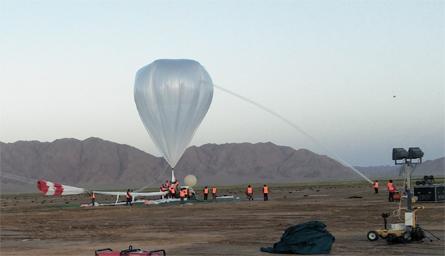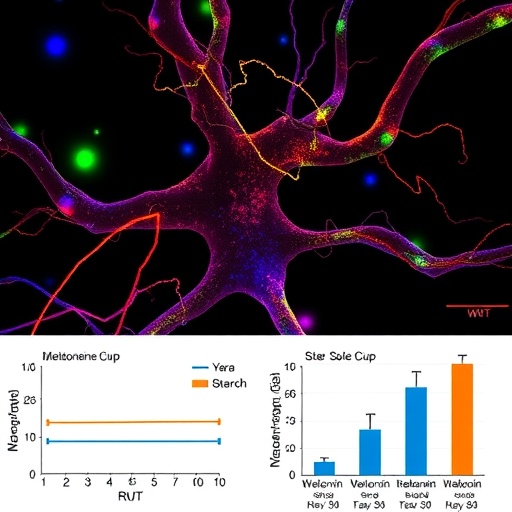
Credit: Jinqiang Zhang
Radiation variations over the Tibetan Plateau (TP) are crucial for global climate and regional ecological environment. Previous radiation studies over the TP were widely based on ground and satellite measurements of the radiation budget at the surface and at the top of the atmosphere.
In situ vertical radiation measurements from the surface up to the upper troposphere and lower stratosphere (UTLS), about 10~22 km in altitude, are rare over the TP or even over a large territory of China.
Dr. Jinqiang Zhang from the Institute of Atmospheric Physics (IAP) of the Chinese Academy of Sciences (CAS), in collaboration with scientists from the Aerospace Information Research Institute of CAS, developed a balloon-based measurement system to measure stratospheric radiation.
This original system, for the first time, provides in situ measurements of multiwavelength radiation profiles from the surface up to the UTLS over the TP. Using this system, scientists can study how and why radiation profiles vary over the TP during the Asian summer monsoon period.
The observation campaigns were conducted three times in the summer of 2018 and 2019, of which the longest flight observation lasted more than 30 hours and achieved a breakthrough of diurnal radiation variation in the UTLS.
According to the team, the stratospheric balloon-based radiation profiles, combined with simultaneous operational radiosondes, ground measurements, satellite retrievals and radiative transfer model simulations, are valuable because the data can be used to study radiation variations and the radiative forcings of clouds and aerosols over the TP during the Asian summer monsoon period. The radiation retrievals from the radiative transfer model simulations and satellite observations are also validated.
“The results of these campaigns can improve our understanding of radiation properties in the UTLS and help us better comprehend the thermal conditions associated with clouds and aerosols over the TP during the Asian summer monsoon period,” said Zhang.
###
Their findings were published in Environmental Research Letters, Journal of Environmental Sciences and Atmospheric Pollution Research. The research was supported by the Strategic Priority Research Program of the Chinese Academy of Sciences and the National Natural Science Foundation of China.
Media Contact
Ms. Zheng Lin
[email protected]
Original Source
http://english.
Related Journal Article
http://dx.




